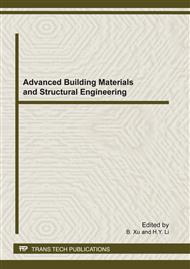[1]
M.S. Grewal, A.P. Andrews, Kalman Filtering: Theory and Practice Using MATLAB, John Wiley & Sons (2001).
Google Scholar
[2]
B.D. O Anderson, J.B. Moore, Optimal filtering, Englewood Cliffs (1979).
Google Scholar
[3]
M. Isard, A. Blake, Contour tracking by stochastic propagation of conditional density, Proceedings of the Fourth European Conference on Computer Vision, 334-356 (1996).
DOI: 10.1007/bfb0015549
Google Scholar
[4]
M. Isard, A. Blake Condensation-conditional density propagation for visual tracking. International Journal of Computer Vision, 29(1), 5-28 (1996).
Google Scholar
[5]
M.S. Arulampalam, S. Maskell, N. Gordon, A tutorial on particle filters for on line nonlinear or non-Gaussian Bayesian tracking, IEEE Trans. on Signal Processing, 50(2), 174-188 (2002).
DOI: 10.1109/78.978374
Google Scholar
[6]
P. Brasnett, L. Mihaylova, D. Bull. Sequential Monte Carlo tracking by fusing multiple cues in video sequences, Image and Vision Computing, 25(8): 1217-1227 (2007).
DOI: 10.1016/j.imavis.2006.07.017
Google Scholar
[7]
S.K. Zhou, R. Chellappa, B. Moghaddam, Visual tracking and recognition using appearance-adaptive models in particle filters, IEEE Trans. on Image Process, 13(11), 1491-1506 (2004).
DOI: 10.1109/tip.2004.836152
Google Scholar
[8]
C. Li, C. Xu, C. Gui, M.D. Fox, Level set evolution without re-initialization, a new variation formulation. IEEE Computer Society Conference on Computer Vision and Pattern Recognition, 430-436 (2005).
DOI: 10.1109/cvpr.2005.213
Google Scholar
[9]
M. Isard, A. Blake, Condensation conditional density propagation for visual tracking, International Journal of Computer Vision, 29 (1), 28-52 (1998).
Google Scholar
[10]
J.F.G. Freitas, M. Niranjag, A.H. Gee, Sequential Monte Carlo methods to train neural networks models, Neural Computer, 12(4), 955-993 (2000).
DOI: 10.1162/089976600300015664
Google Scholar
[11]
H.W. Shi, Human motion tracking based on statistical model and genetic particle filter. Application Research of Computers, 25 (4), 109-210 (2001).
Google Scholar
[12]
T. X Yuan, Principles of best estimate. National Defence Industry Press (1980).
Google Scholar
[13]
X.R. Li, V.P. Jilkov, A Survey of maneuvering target tracking-part I: dynamic models, IEEE Transactions on Aerospace and Electronic Systems, 39(4), 1333-1364 (2003).
DOI: 10.1109/taes.2003.1261132
Google Scholar
[14]
X.R. Li, V.P. Jilkov, A survey of maneuvering target tracking-Part III: Measurement Models, Proceedings of SPIE Conference on Signal and Data Processing of Small Targets, 423-446 (2001).
DOI: 10.1117/12.492752
Google Scholar
[15]
M.K. Pitt, N. Shephard: Filtering via simulation, Auxiliary particle filters, 94(466), 590-599 (1999).
DOI: 10.1080/01621459.1999.10474153
Google Scholar


